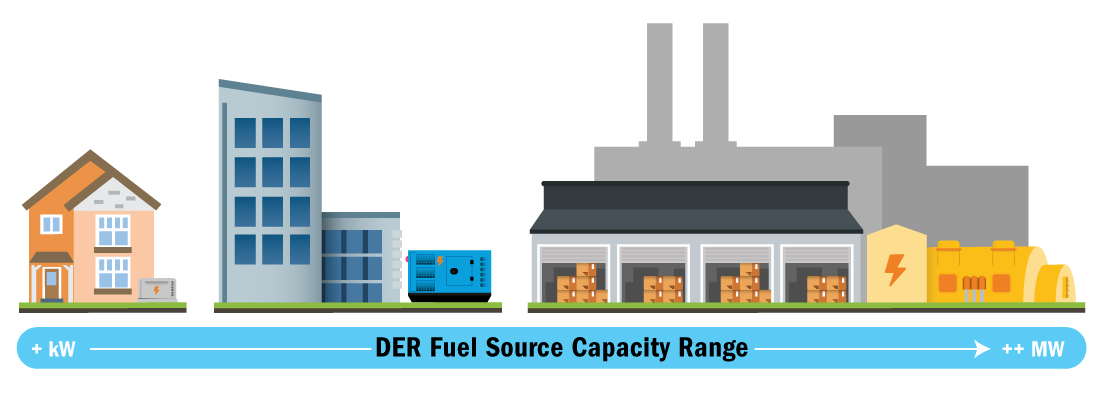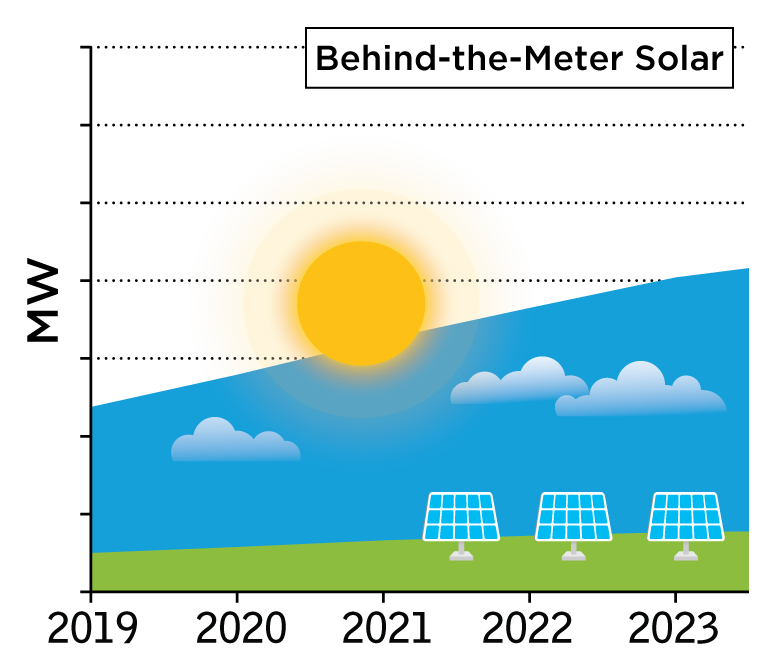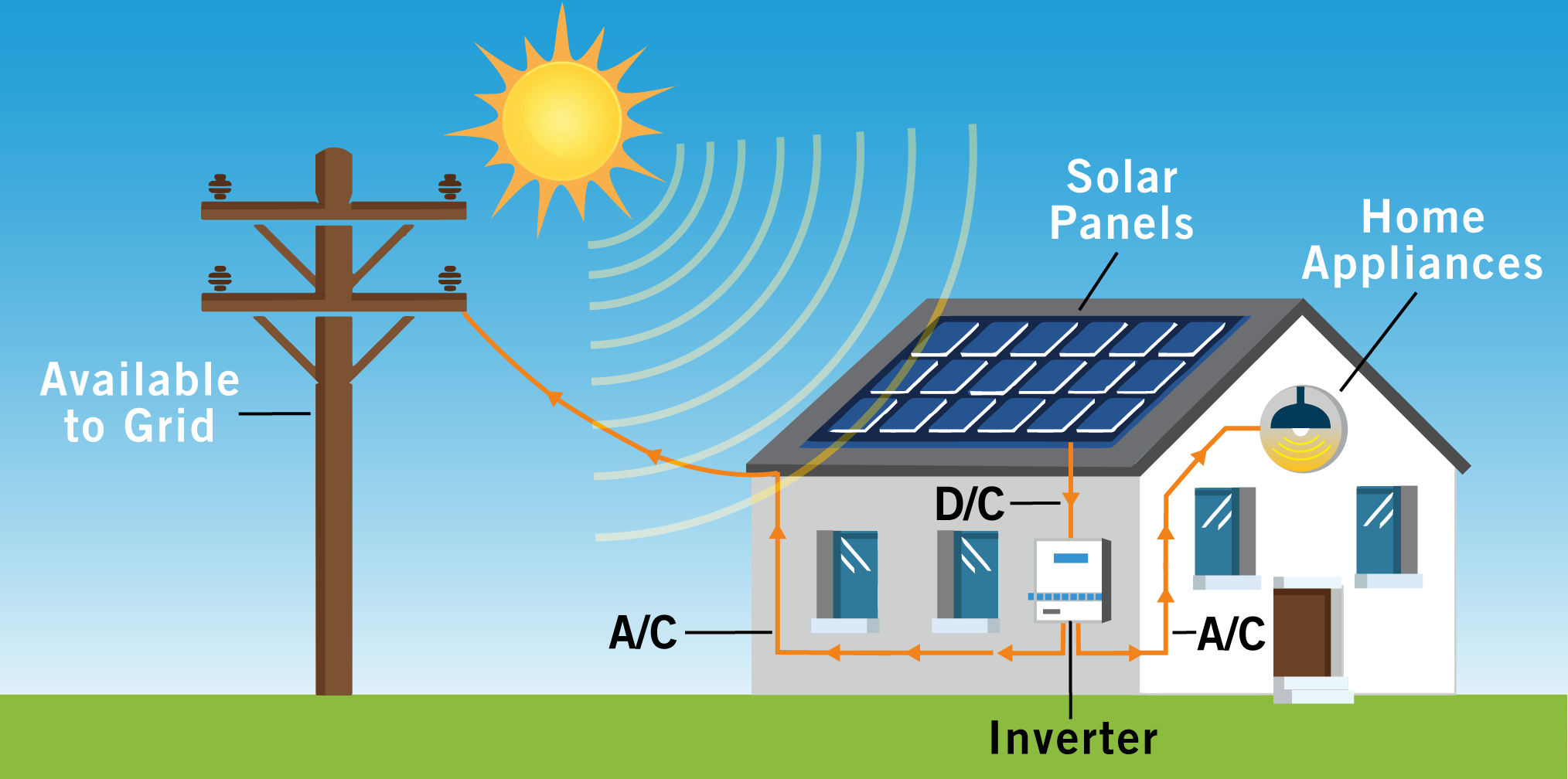Distributed Energy Resources
 Distributed energy resources represent a small but growing part of the electric energy resource mix. PJM is working alongside others in the electricity industry to explore how to integrate them into markets and operations to help maintain system reliability.
Distributed energy resources represent a small but growing part of the electric energy resource mix. PJM is working alongside others in the electricity industry to explore how to integrate them into markets and operations to help maintain system reliability.
- DER are small electric generation or energy storage units connected to the local electric distribution system.
- Most DER are installed on the customer’s side of the electric meter. PJM has information about these DER including their size, location and when they were installed. Their day-to-day output is not visible to PJM.
- Some DER participate in wholesale electric power markets, and when they do, PJM gains visibility into their operation and how to coordinate with them.
- The more DER in an area, the greater potential impact on the high-voltage transmission system.
- DER can be powered by a wide variety of fuel sources and can range in capacity from a few-kilowatt residential unit, to a few-hundred-kilowatt commercial unit, to a generator as large as 20 megawatts. One megawatt powers about 800 homes.


Forecasting to Ensure Efficient Dispatch and Planning
- The short-term solar forecast predicts how much output non-wholesale solar DER will generate from five minutes to one week in advance.
- The long-term solar forecast looks at trends in solar power pricing and policies to forecast how many solar power systems will be installed each year, extending out 15 years.
These forecasts ensure that PJM can efficiently dispatch generators to meet customers’ immediate needs and help PJM plan for sufficient electric supply and transmission infrastructure in the future.
Gaining Greater Situational Awareness
Knowing the location of non-wholesale DER can help system operators better understand system conditions if they need to respond quickly to emergencies. PJM’s Dispatch Interactive Map application shows system operators if these resources are near a substation. In emergency situations, this information can help operators and transmission owners determine whether DER could help alleviate emergency operating conditions on the transmission system.
Wholesale DER are connected to the distribution system and offer their output and services to PJM markets. PJM knows the status of these units. There are hundreds of megawatts of such units in the market today. However, most DER are considered non-wholesale. They include as wide an array of technology types as wholesale DER, but they don’t participate directly in the market. There are thousands of megawatts of non-wholesale DER in the region.
When Distribution Affects Transmission
PJM oversees the regional transmission system and has a significant interest in understanding the impact that DER have on the amount of electricity that must be carried by the transmission lines. Understanding the impact of DER also helps PJM control voltage on the transmission system and protects the system from failure and damage. The more DER at the lower-voltage distribution level, the more they can affect high-voltage operations, which is why PJM is working with stakeholders on the issue.
"Ride Through" Instability
When the bulk power system experiences a brief disturbance, such as abnormal frequency or voltage conditions, large generators must stay connected and “ride through” the instability. This helps correct the issue. But under older interconnection standards developed in 2003, DER must disconnect during these disturbances for the safety of personnel working on the distribution system.
As the amount of DER grows, however, the result of those resources going offline could be problematic. As a result, the electric industry around the globe is working to implement new interconnection standards that would require DER to ride through disturbances to help protect system reliability. Looking ahead, with the help of “smart-inverters” that communicate with the local utility and react to grid conditions under established protocols, these resources would behave much like large generators, helping the system withstand instability.
